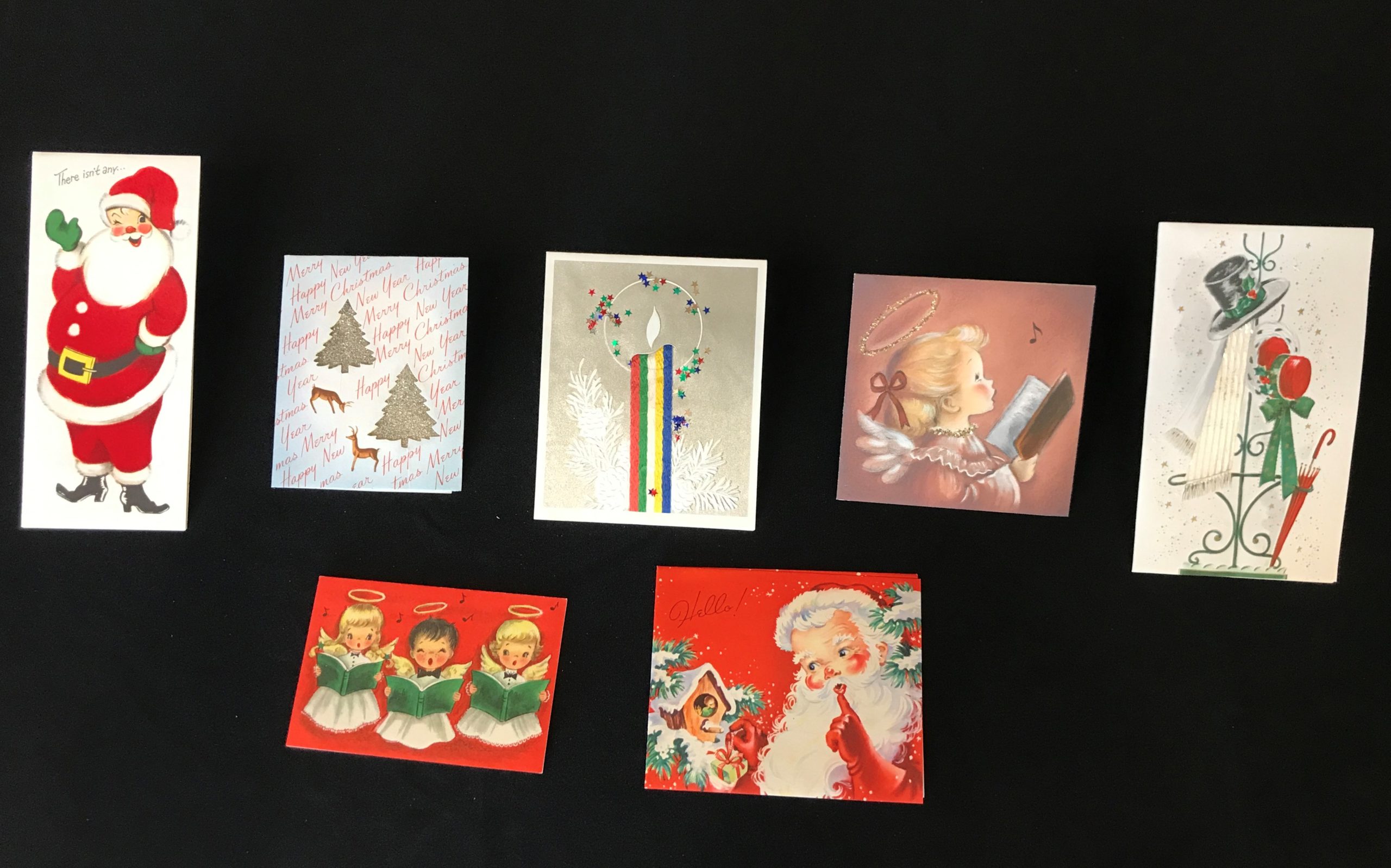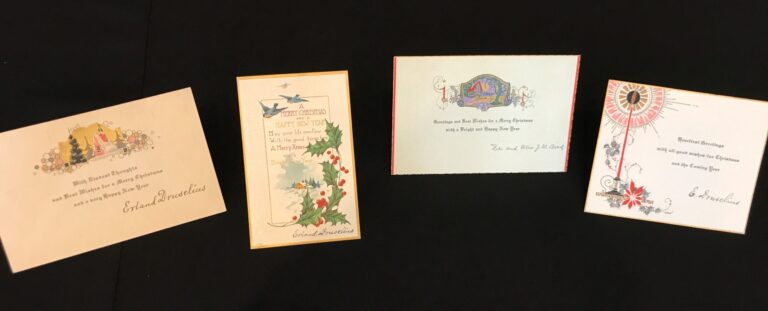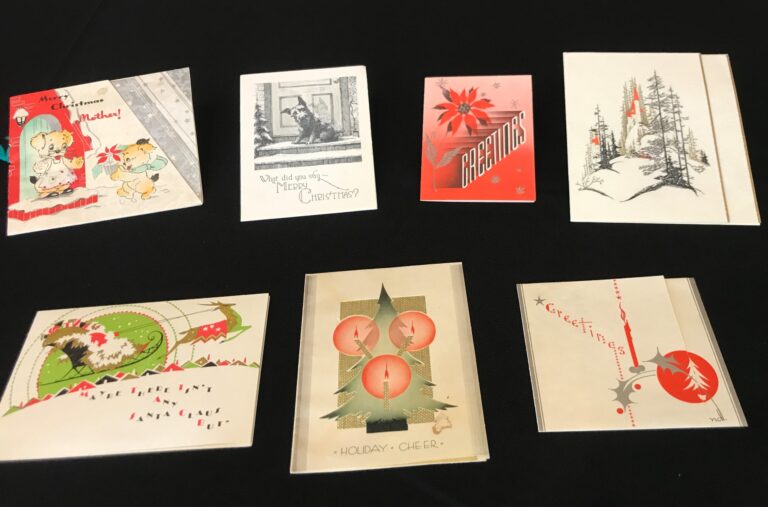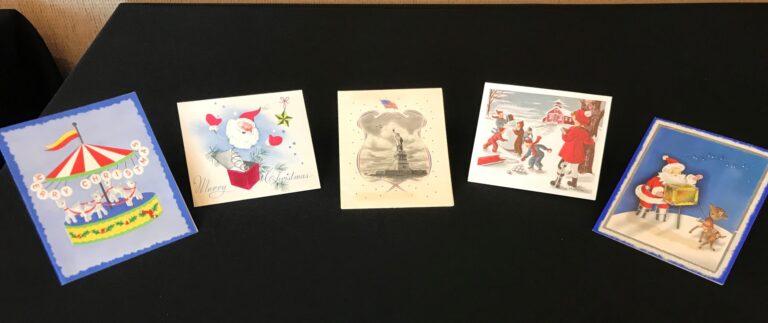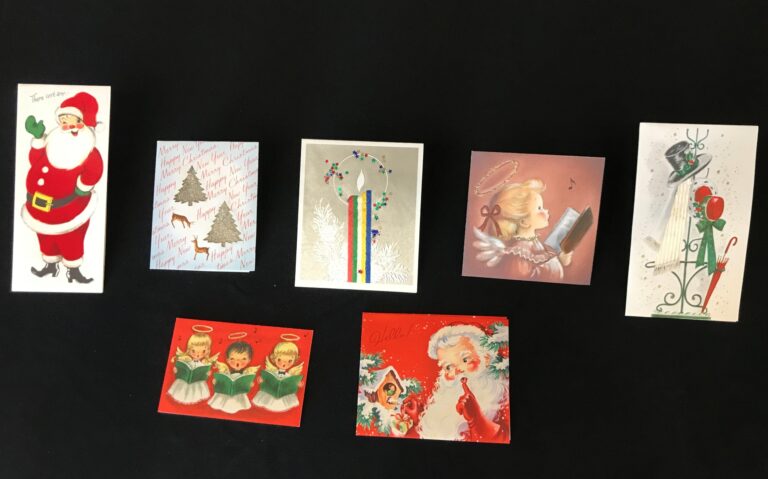Greeting Cards; A Window to Our History
The museum has a unique collection of greeting cards that was part of a donation from the Ida Browder family. Ida Brower may be a familiar name to some, as she was the owner of Browder’s Cafe in Boulder City going back to the days of the Boulder Dam construction. Ida kept every card she was sent for more than 4 decades, and so this gives us a unique and special insight in now only how cards and their manufacture have changed over time, but it allows a peek into the history of those times, from the 1920s to the end of the 1950s.
The Christmas cards selected show how greeting cards reflect the social period in which they were produced, whether it is from the materials they were made with, the style of font and imagery or the message that they convey. Watch a video about the historical interpretation of these cards here.
Ida Browder Collection: VM-2009-013
The 1920s began with people recovering from the impacts of World War I and Spanish influenza and then experiencing the financial hardship of the Great Depression, and so the greetings cards reflect these difficult times. They were made from a single piece of card, slightly larger than a traditional postcard, but unlike postcards, they were signed in the front and mailed in an envelope. The messaging was traditional and succinct.
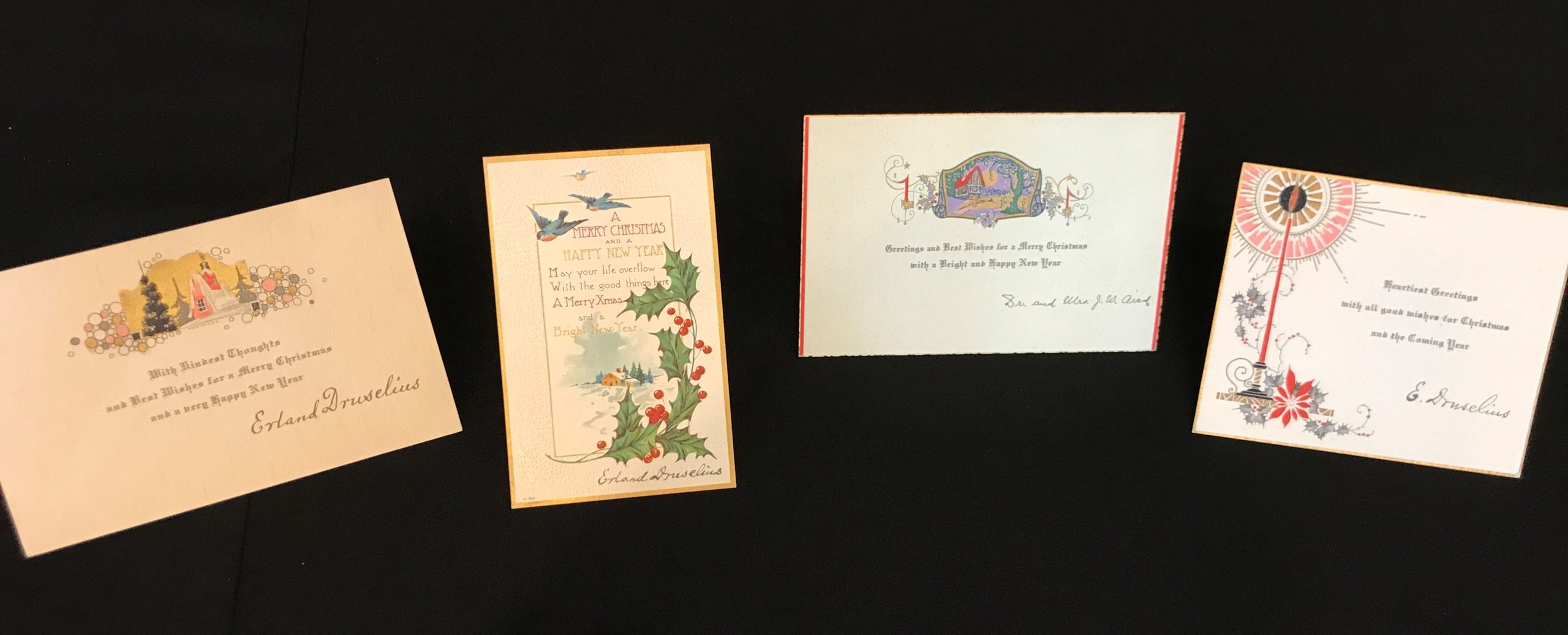
By the 1930s, greetings cards were more like todays, made with a fold and wording printed inside. There is a recognizable influence from the ‘art deco’ era with the stylized fonts and imagery and also the first use of additional materials; a woolen tie on one card and a piece of material on the dress, as well as the first Santa Claus of the collection.
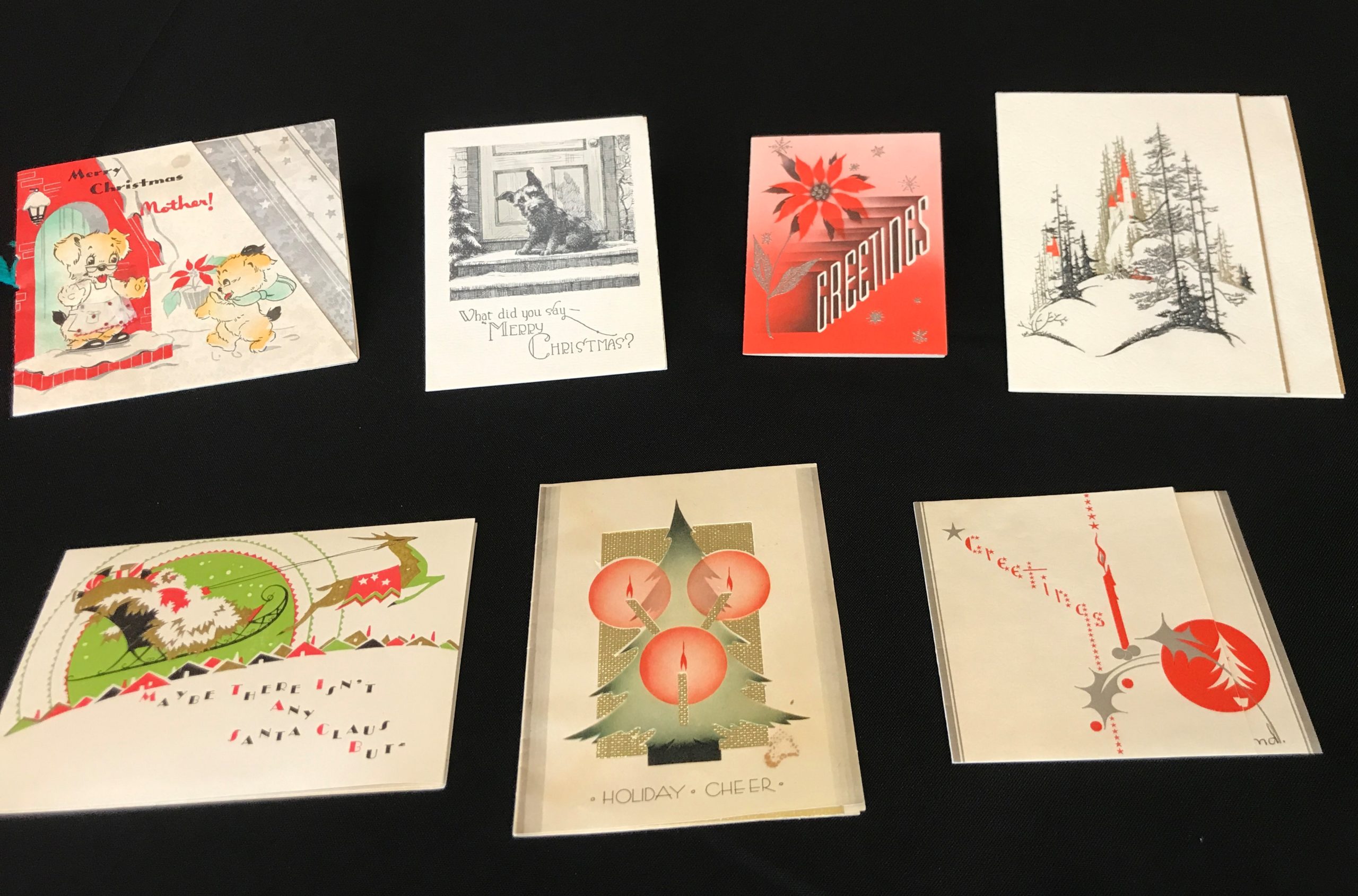
With the 1940s came World War II and patriotic cards, however in the happier post war times, the designs are more fun, creative, and colorful. There is one card that shows a girl in calipers from having had polio; a disease that by the 1950s had become one of the most serious communicable diseases among children in the US.
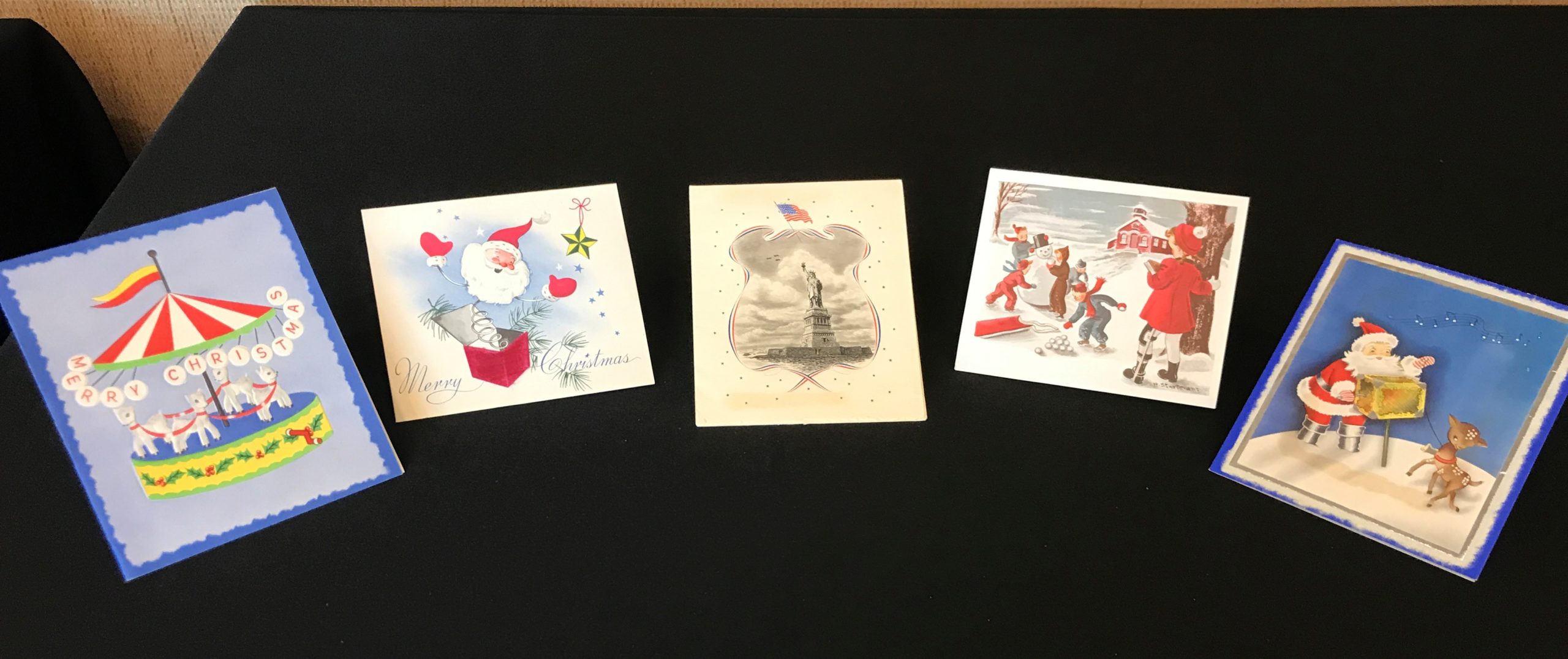
The 1950s produced the most decorative cards using glitter and star shaped sequins as embellishments. The cards are larger and of different shapes and they have a ‘cuteness’ about them with children and cherubs reflecting the booming economy, booming suburbs and the so-called “baby boom” due to people’s confidence in the post-war future of peace and prosperity.
